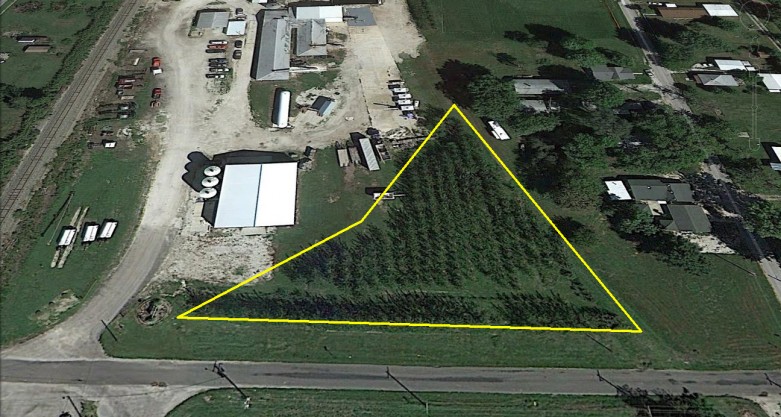Phytoremediation Gallery
← Hybrid Poplar Landfill Cover, Irrigation, and Groundwater Monitoring
Phytoremediation of Stormwater at Agronomy Facilities
Eastern Wisconsin Back to Main Project GalleryAgronomy Facility Sample Site 1:
An agronomy cooperative in eastern Wisconsin constructed a 1.7-acre liquid fertilizer containment structure. On an annual basis the liquid nitrogen containment structure collects an estimated 1.1 million gallons of water. Wisconsin’s rules allow for the discharge of stormwater from a liquid fertilizer containment without treatment as long as the water tests with less than 20 mg/l nitrogen. Containment water with nitrogen concentrations greater than 20 mg/l, but less than 200 mg/l, requires treatment. To avoid discharging fertilizer to an adjacent creek and wetland, the cooperative intends to plant 2 acres of hybrid poplars to act as a nitrogen sink and to utilize as much stormwater and nitrogen as possible. At 5 years, 2 acres of poplars will be able to transpire an average of 18,000 gpd of water and immobilize/sequester 600 to 1,000 pounds of nitrogen annually.
Agronomy Facility Sample Site 2:
Stormwater from an active agronomy facility currently infiltrates into shallow, surficial soils over bedrock, potentially impacting groundwater. No other discharge options exist. The facility decided to implement a plant-based stormwater management system to maximize nutrient removal from the stormwater before it infiltrated to bedrock. Available area and steep terrain limited construction options. To optimize nutrient removal, approximately 200 hybrid poplars were planted in a series of small stormwater retention ponds constructed of top soil and underlain with native clay. Use of this approach was instrumental for allowing the municipality to approve proposed site construction work.
